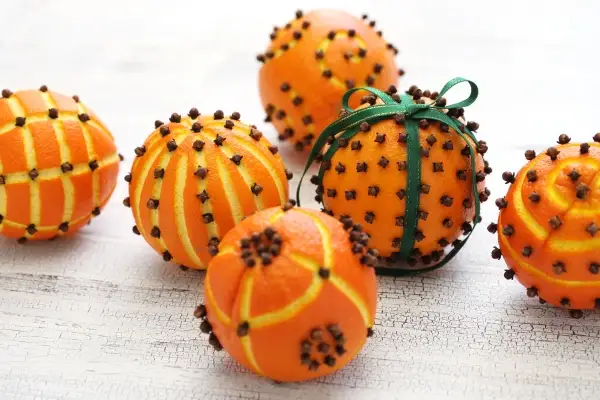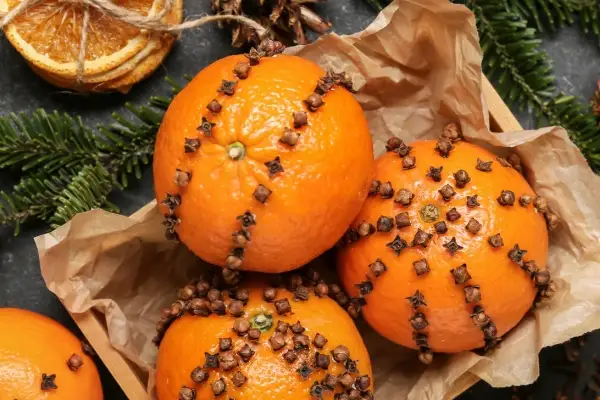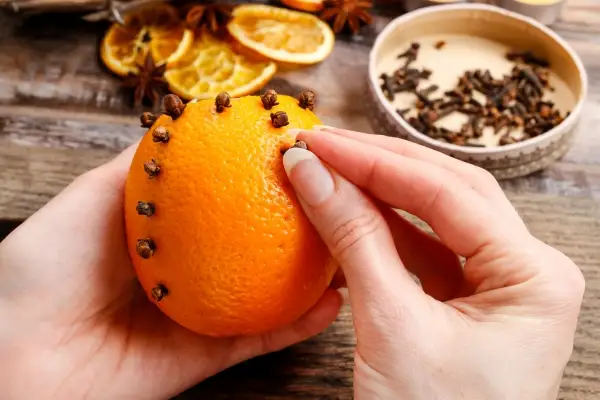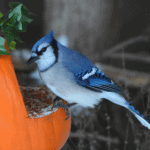Pretty Please, Let’s Make Pomanders!

The holidays are a time of nostalgia and connection, when we crave the simplicity of the “good old days” and the happy memories they evoke. Every year can be a struggle, however, with ever-increasing commercialism driven by entertainment and social media. Looking beyond the latest gadgets, mass-produced decorations, and gift trends can help us create new memories with creative connections to the past – which is where pomanders come in.
What Is a Pomander?
Pomanders have been around for centuries, though not quite as the holiday decorations we enjoy today. In the early 1200s through the 1600s, a “pomme d’ambre” – French for “apple of amber” was a ball of ambergris, a waxy substance from the sperm whale’s digestive system. Aged ambergris has a sweet, somewhat earthy scent and was often used as a base for perfumes. This wax-like substance would be mixed with herbs to create small scented balls, or pomanders. Over time, pomanders also came to be made from other scented resins.
The term pomander could also refer to the container that holds these perfumed wax balls, small orbs with lace-like, perforated shells to allow the scents to escape. They could be made from different types of metals, or even actual lace.
The Purpose of Pomanders
Pomanders were used as ancient aromatherapy, a way to have pleasant, palatable scents cover up less appealing odors such as illness, rot, or poor hygiene. While the Black Death was raging in Europe in the mid-1300s and during other prominent plagues, pomanders were believed to purify the air and ward off disease, though modern medicine have proven that to be ineffective.
Today, pomanders are more for preference than practicality. They can not only be carried about for a whiff of beauty with every step, but they are also popular to put in linen closets, dresser drawers, closets, or attic space to freshen stale air with a fragrant spice.
If pomanders are made with lemons and cloves, they can serve as a natural insect repellent, which makes them popular in kitchens or near doorways or other entry points for unwanted visitors.
Symbolism of Pomanders
In ancient Rome and China, pomanders were distinctive signs of prosperity and wealth, particularly since cloves – native to Indonesia – were only available to the very wealthy. Today, pomanders are a good luck charm for many Asian cultures, particularly for New Year’s to attract abundance.
Cloves are believed to improve mental clarity and enhance positive energy, making these spices a natural complement to the spiritual symbolism of the apple, from wisdom and divinity to strength and healing. If used for an orange pomander, the clove increases the fruit’s symbolic energy, abundance, and vitality.

Modern Pomanders
By the 1800s, pomanders were no longer just for the elite of society who could afford perfumed ambergris or resins. Fragrant whole fruits became used as pomanders – apples were a favorite, especially among American pioneers. Apples studded with whole cloves were also called balsam apples, clove apples, or smelling apples, and offered the same scented function of more elaborate pomanders but were much more easily accessible for everyone.
It was pioneers who gave me my first exposure to pomanders and their beautiful scents. In her premier children’s book, Little House in the Big Woods, published in 1932, Laura Ingalls Wilder described gifts exchanged at Christmas in the 1860s.
“Aunt Eliza had brought Ma a large red apple stuck full of cloves.
How good it smelled!
And it would not spoil, for so many cloves would keep it sound and sweet.”
The smell of apples is so iconically fall and ideal for winter treats, it’s no surprise that apple pomanders have been popular for so very many years. They remain an easy and popular craft project today, great as gifts and decorations throughout the holiday season.
Making Pomanders
Pomanders can be as simple or elaborate as you prefer. You can choose classic apples or oranges to turn into perfumed pomanders, or opt for lemons, limes, or grapefruits for more variety. Consider an entire fruit bowl with different pomanders!

To create pomanders, you will need:
- Fresh, firm fruit without bad spots or discoloration
- Whole cloves
- Thimble
- Toothpick, tapestry needle, nail, or fine awl
- Sharpie or similar fine-tipped marker
- Paper bag
- Ground cinnamon, allspice, or nutmeg
To make a pomander:
- Clean and dry the fruit ensuring there are no stickers or dirt on the skin. Simple clean water is best – avoid scented soaps or cleaners that may taint the natural scent of the pomander.
- Draw a decorative pattern on the fruit. Swirls, words, stripes, dates, and pictures are all great depending on your artistic ability. The fruit will shrink slightly as it dries, so plan accordingly for the size of your cloves.
- Gently pierce the fruit’s skin with the nail or awl to make it easier to insert the cloves. This can be a juicy step and it is often easier to pierce 3-5 holes at once and wipe away the juice before inserting cloves.
- Insert a whole clove into each piercing with the clove head protruding at the surface of the skin. It can be helpful to use a thimble to ensure firm placement without bruising or pain, especially if using dozens of cloves.
- Continue placing cloves around the entire pattern. It may be necessary to wipe off the fruit to sop up juice, but take care not to loosen the cloves as you work or else they may fall out as the pomander dries.
- When the pattern is complete, place the fresh pomander in the paper bag with a generous sprinkle of ground cinnamon or other spices. This will further scent the fruit and cinnamon’s anti-fungal properties help with preservation.
- Leave the pomander in the bag for 3-4 weeks to dry, shaking it gently to spread the cinnamon every 2-3 days. This will ensure more even drying and a much more fragrant finished pomander. For faster drying, use a food dehydrator or place the finished pomander in a warm oven for several hours.
When fully dry, pomanders can be displayed on a mantle or shelf, arranged in a bowl or tall hurricane glass, or even hung as ornaments. Place a pomander in a tulle bag and tie with a ribbon for a lovely gift, or hang one in a vehicle for instant holiday scents. For an even more festive display, add evergreen sprigs, cranberries, or pine cones to the display and enjoy the stunning scents and textures it brings to the season.
Any questions? Contact [email protected]

Melissa Mayntz
Melissa Mayntz is a writer who specializes in birds and birding, though her work spans a wide range—from folklore to healthy living. Her first book, Migration: Exploring the Remarkable Journeys of Birds was published in 2020. Mayntz also writes for National Wildlife Magazine and The Spruce. Find her at MelissaMayntz.com.





